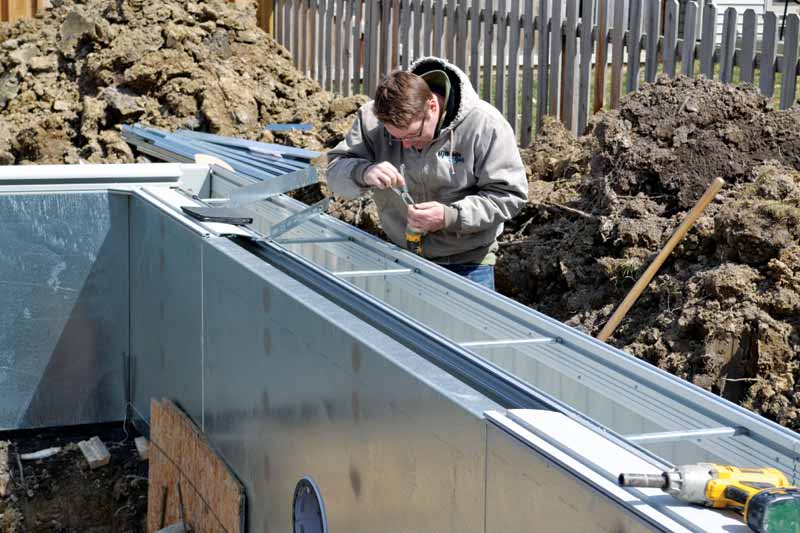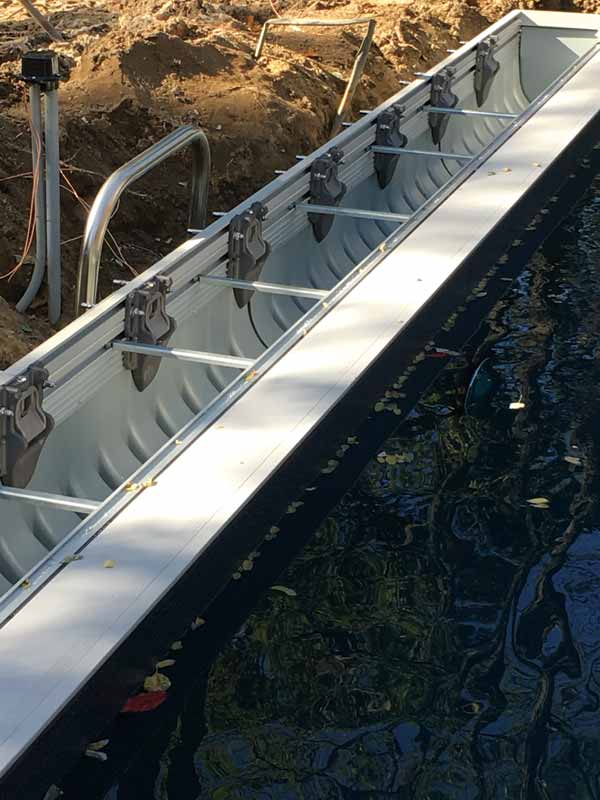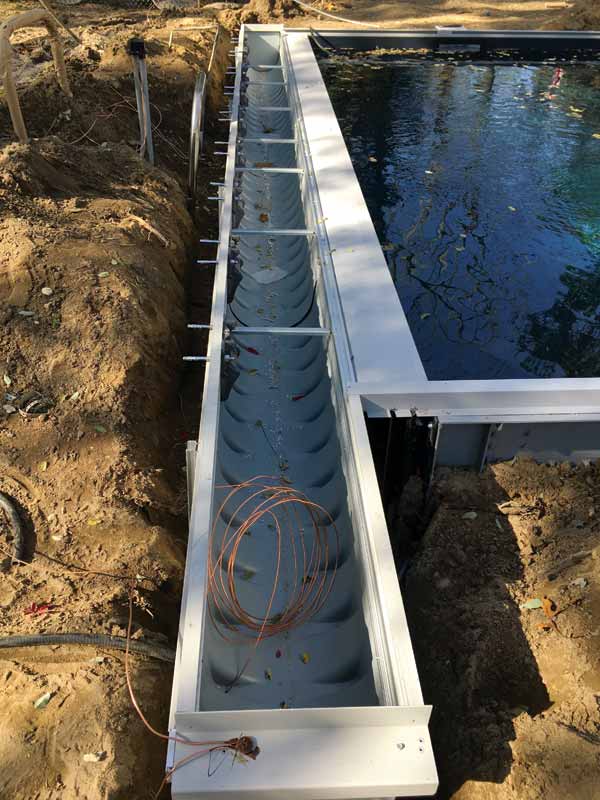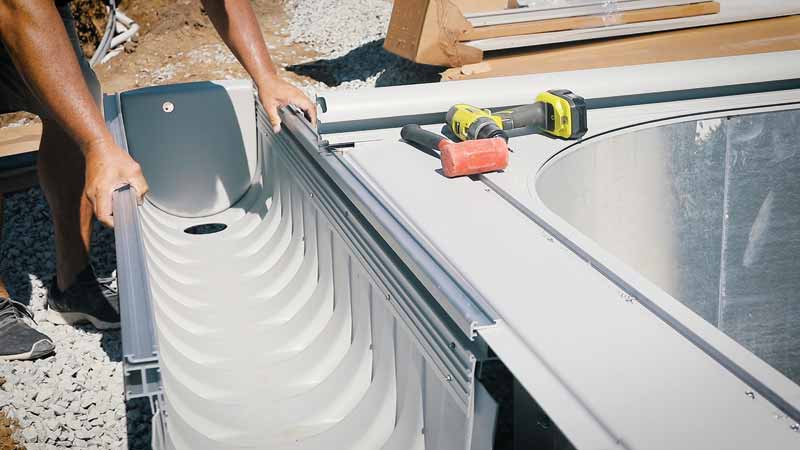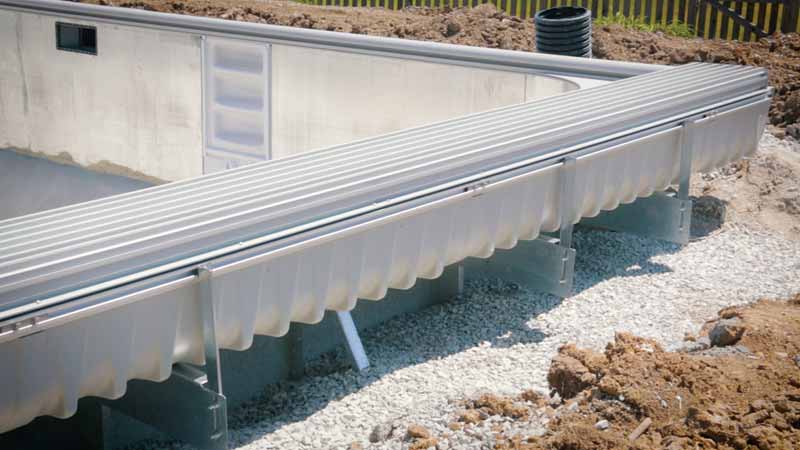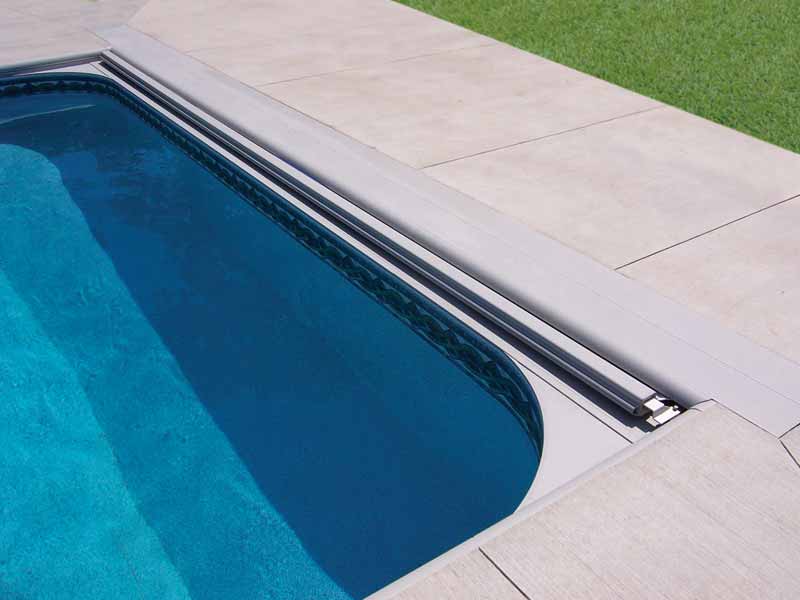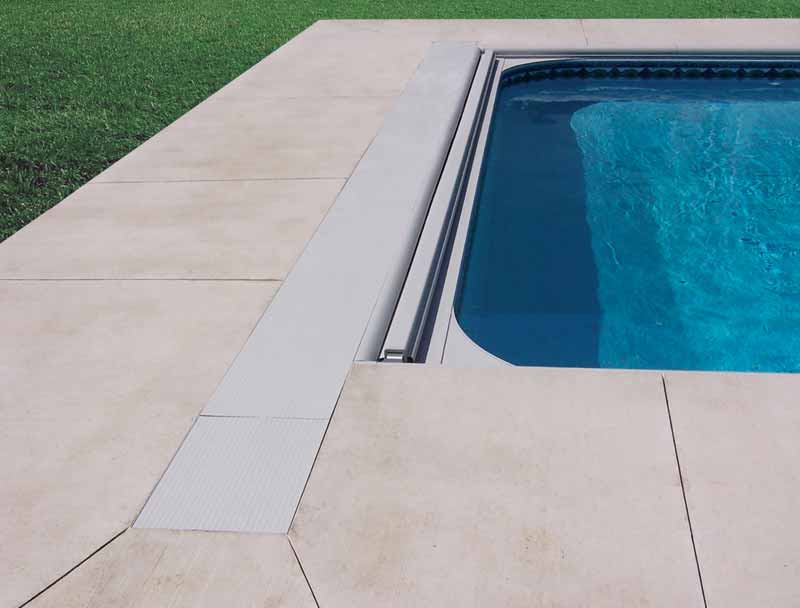Automatic pool covers: Integrating new designs into vinyl-lined installations
by Samantha Ashenhurst | November 9, 2018 11:04 am
By Michael Shebek
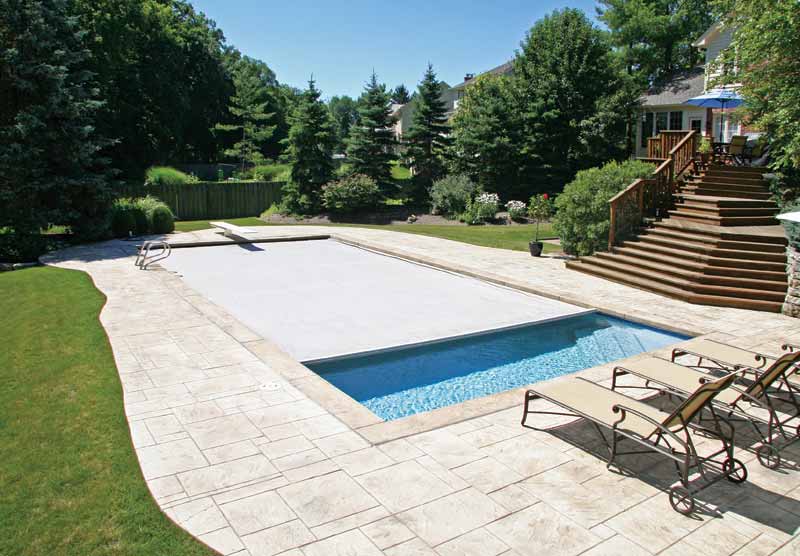 [1]
[1]There was once a time when automatic pool covers were reserved for high-end pools—ones with vanishing edges that overlook oceans and lakes. However, in recent years, there has been a shift.
These days, automatic pool covers are being installed on everyday pools, especially vinyl-lined models. This emerging trend is facilitated by new automatic cover systems, which are being created specifically for package pools. Savvy consumers see automatic covers on TV and the Internet and ask pool professionals to provide this type of cover because of the added convenience and safety they provide.
The automatic pool cover is part of the wave of ‘automation’ in today’s homes. Indeed, consumers are looking for convenience and control. From home security systems and outdoor lighting to in-pool robotic cleaning and chemical controllers, consumers want push-button convenience—and this is exactly what automatic covers provide. These devices allow homeowners to open and close their pool with the push of a button, while still ensuring their pool is safe.
Luckily for builders, automatic covers have evolved to meet consumer demand and are now designed for fast, convenient, and reliable installation, specifically for pools with vinyl liners. Just as vinyl-lined package pools were created to provide a budget-friendly option to those constructed of concrete, so, too, are automatic covers now designed to integrate perfectly with package pools. Understanding the consumer demand for push-button convenience helps builders increase profits on every vinyl-lined installation.
Allan Horwood, owner of Pool Patrol in British Columbia, says automatic covers have become a significant aspect of his business—but this was hardly the case 20 years ago.
“Back then, trying to sell an automatic pool cover to our middle class customers was a tough sell,” says Horwood. “These days, the attitude is very different. On average, pools we build today can cost $45,000, and automatic covers add another 30 per cent or $15,000 to a project.”
Despite the additional cost, consumers understand automatic pool covers are the best way to finish off a pool.
“It’s like when you redesign your kitchen,” Horwood explains. “If you spend $60,000 on the renovation, you aren’t going to want plywood countertops; you spend the extra money for granite.”
Automatic cover kits for vinyl-lined pools
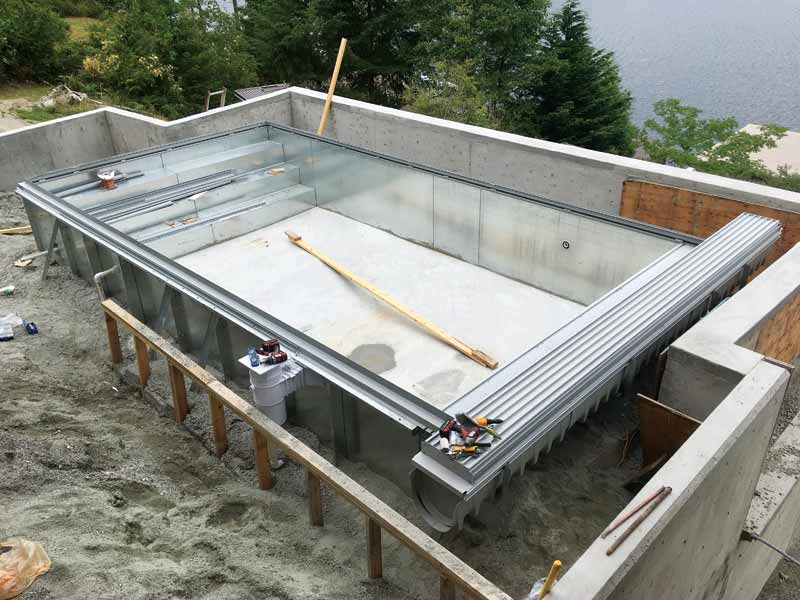 [2]
[2]Today’s automatic pool cover systems attach very easily to vinyl-lined package pools. In fact, the automatic covers themselves come in a ‘kit’ system—similar to how package pools arrive as a ‘kit.’ Created for pool builders who specialize in vinyl-lined applications, these kits require very little excavation and no additional form work. Plus, the cover housing is simple to level, as it attaches to the back-end of the pool.
Further, these systems can be installed alongside any type of deck, whether its concrete, pavers, stamped concrete, or limestone.
“The kits come with strong, removable lid brackets, in a variety of lengths that can support any deck surface,” says Gary Hendrick, president of Hendrick Pools, a family operated business in McCordsville, Ind., that has been building pools for more than 30 years.
These lid brackets are placed over the drive mechanism and support a flush, aluminum walk-on-lid making the system completely enclosed.
“People want a nice, clean job with no track on the deck,” says Hendrick. “The cover box lid with automatic pool covers is virtually invisible as it lies perfectly flat with the deck, which many homeowners prefer.”
This enclosed cover box is not only convenient for the builder, but also makes maintenance easy for the owner.
“The box stays cleaner and helps keep critters out of the mechanism,” explains Horwood.
The first time vinyl-lined pool builders install an automatic cover, however, the process, for some, can be a little overwhelming.
“There are a lot of boxes and the process can be likened to assembling Ikea furniture,” says Horwood.
As such, some builders prefer to hire an expert to install the automatic cover, while others work with the automatic pool cover suppliers to get training, especially for their first installation.
Installation overview
Assuming the pool is square, the pieces required for an automatic cover are installed right into the steel or polymer wall. After the wall panels are installed, the automatic pool cover kit can be assembled within roughly eight hours. Those eight hours are broken up into two stages: four hours for two people to complete the pre-pour stage, plus an additional four hours with two people to complete the post-pour stage.
At the simplest level, an automatic cover consists of two parallel tracks—one on each side of the pool. Each track is comprised of two channels, designed to allow a rope to travel poolside, around a pulley at the track’s end, and then on the backside of the same track into a storage house. The cover is attached to the poolside rope, so when the non-poolside rope is pulled, the cover is drawn out over the pool. A tube is used to retract the pool cover into the same housing.
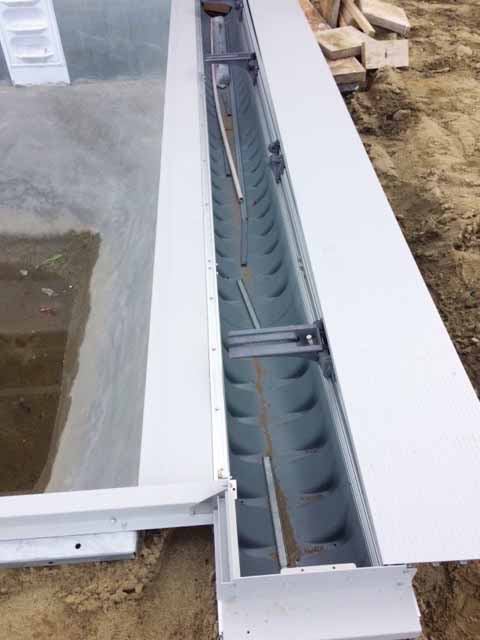 [3]
[3]The manufacturer’s drive system contains the brains as to how fast or slow the system moves. It determines how the cover will stop at each end of the pool, and may also feature technology to prevent damage if the cover becomes under stress during operation.
Pre-pour steps
As with any vinyl-lined package pool, construction begins with excavation and then setting the pool panels in place. Next, the automatic cover kit is installed before any backfilling begins.
Using a one-piece coping design around the perimeter of the pool, the kit includes corner assemblies compatible with most package pools, including 152-mm (6-in.) radius, 76-mm (3-in.) diagonal, 0.6-m (2-ft) radius, and 90-degree square corners.
Once the coping is attached, a ‘slide-on’ polybox housing is placed with a wall cap to support the housing. This housing is pre-crafted and fastened into the wall cap in a ‘tongue-and-groove’ fashion, which permits easy installation.
Next, builders use an adjustable stake brace for precise levelling of the housing. The kit also includes ‘drop-and-lock’ brackets within the polybox. This ensures accurate placement of the automatic cover mechanism on the pool.
Once the polybox housing has been placed, the pool is then backfilled.
Post-pour steps
Next is the process of pouring the pool deck—and installing the ‘post-pour’ pool cover. This occurs after the deck is poured, the vinyl liner is placed, and the pool is being filled with water. It is during this stage when the second phase of automatic pool cover installation takes place.
This procedure begins by installing the roller mechanisms into the polybox, which takes about an hour. The mechanism is placed on hangers within the box and then locked into position.
Next, the tracks are laid and ropes are placed along each side of the pool. This second step takes one to two hours to complete. The aluminum tracks have a double-channel design: one channel for the rope and the other for both the rope and cover.
Once the tracks are in place, installers then set up the unit’s leading edge bar, which is positioned in front of the cover to prevent it from dipping into the water. The ropes are attached to the mechanism’s rope reels, allowing the fabric of the cover to be pulled over the pool. The installer then makes any necessary adjustments to ensure the cover operates smoothly. Finally, brackets are placed over the cover housing to hold the lid, which encloses the mechanism and housing.
Final touch (pad)
The pool cover’s touch-pad controller is the final installation item. Ideally, this should be pre-wired before the cover is installed. Once the cover is in place, builders should take the time with the customer to perform a complete demonstration of the mechanics before the hand-over.
Getting on board
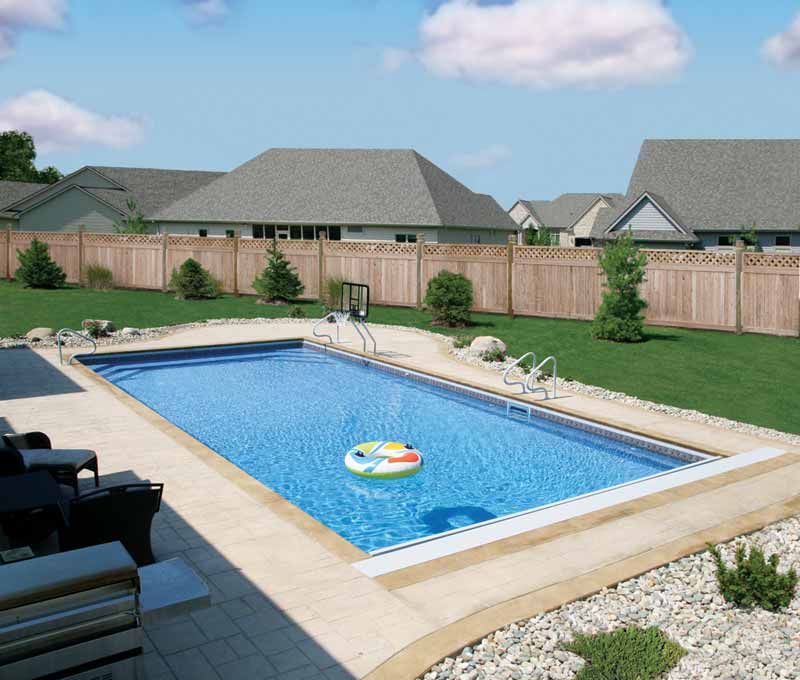 [4]
[4]The market for swimming pools and backyard living has evolved. Consumers are continually looking for ways to maximize their investment, and want to spend more time enjoying their pool and less time maintaining it. An automatic cover not only minimizes the work involved in opening and closing a pool; it also reduces the overall maintenance. Builders are aware of this trend and, as such, have begun to adopt automatic pool covers into their sales and installation processes to satisfy the market need.
“We install an automatic cover with every new pool we build,” says Hendrick. “The pre-pour installations became much easier to perform with the introduction of automatic pool cover kits for vinyl liner and fibreglass pools.”
Consumers simply do not want to manually crank a cover on and off their pool; they want the pool to open instantly, while at the same time remain free of leaves and other debris.
“I have clients who really have no patience,” laughs Horwood. “They can’t wait—not even for the automatic cover to open and close. One customer wanted to know if they really needed to hold the button on the cover control system for 32 seconds. They thought that was a long time.”
Understanding this customer reality is why the demand for automatic pool covers is growing at such a fast rate. To demonstrate the value of pool covers to customers, there are several benefits pool professionals should address.
Opening/closing convenience
The automatic pool cover can open or close in less than 45 seconds. Plus, the installation does not require the customer to store a manual safety cover in their garage, pool house, or at the pool company’s warehouse.
When discussing automatic covers with prospective customers, a pool professional should always emphasize the accessible convenience that comes with the installation. This technology allows owners to open and close their pools easily on an immediate basis.
Reduced water chemistry work
The convenience of an automatic cover also extends to water chemistry.
Installers should explain the importance of keeping pool water free of debris. Once owners realize these covers will allow them to spend significantly less time keeping their pool clean, the added convenience becomes all the more apparent.
Reduced maintenance costs
Automatic pool covers may be unrivaled in the savings they provide. As such, it is essential for pool professionals to promote the many monetary advantages of these installations. Covers reduce the overall utility costs of maintaining a pool, as they help retain heat and keep chemicals and water from evaporating. These factors contribute to a reduction in the operational costs as well.
Gas-heated pools with covers save approximately $2000 per year, according to studies conducted by this author’s company. Likewise, research has demonstrated automatic covers save approximately 30,283 L (8000 gal) of water evaporation annually. Plus, these covers cost less than two dollars per year in operational costs.
Final considerations
Installing automatic pool covers requires a certain amount of skill and ability. As with any installed product, the question pool professionals must determine is whether they want to sell, install, and service automatic covers, or would they prefer to simply outsource the installation and ongoing service.
Many builders opt for the latter, as outsourcing these installations allows them to focus on their primary business of building pools. In either case, the final decision comes down to a dealer’s personal preference and competitive advantage.
The market demand for automatic pool covers continues to grow each year, providing pool professionals with a tremendous opportunity for additional revenue—especially when they see how well these installation kits work with package pools.
 [5]Michael Shebek is owner and CEO of Automatic Pool Covers Inc., a cover manufacturer based in Westfield, Ind. The business was started in 1979 as a pool cover installation and service company. Shebek has more than 20,000 hours of in-field pool cover service experience. He can be reached via e-mail at mshebek@apc-mfg.com[6].
[5]Michael Shebek is owner and CEO of Automatic Pool Covers Inc., a cover manufacturer based in Westfield, Ind. The business was started in 1979 as a pool cover installation and service company. Shebek has more than 20,000 hours of in-field pool cover service experience. He can be reached via e-mail at mshebek@apc-mfg.com[6].
- [Image]: https://www.poolspamarketing.com/wp-content/uploads/2018/11/Courtesy-Automatic-Pool-Covers-PoolLandscape-copy.jpg
- [Image]: https://www.poolspamarketing.com/wp-content/uploads/2018/11/Courtesy-Allan-Horwood-Pool-Patrol-IMG_8001-copy.jpg
- [Image]: https://www.poolspamarketing.com/wp-content/uploads/2018/11/Courtesy-Allan-Horwood-PoolPatrol-IMG_0191-copy.jpg
- [Image]: https://www.poolspamarketing.com/wp-content/uploads/2018/11/365-picture-Final-copy-Courtesy-AutomaticPoolCovers.jpg
- [Image]: https://www.poolspamarketing.com/wp-content/uploads/2017/09/Shebek_Headshot.jpg
- mshebek@apc-mfg.com: mailto:mshebek@apc-mfg.com
Source URL: https://www.poolspamarketing.com/trade/features/automatic-pool-covers-integrating-new-designs-into-vinyl-lined-installations/
